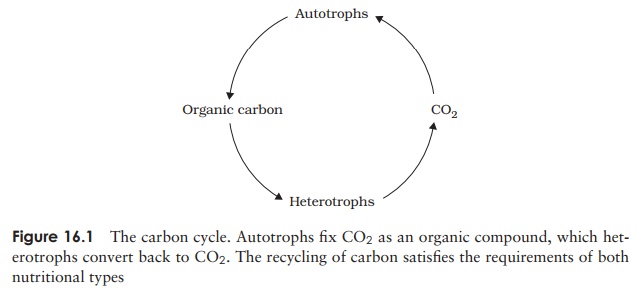Chapter: Essential Microbiology: Microorganisms in the Environment
Microorganisms in the Environment
Microorganisms in the
Environment
First, however, we must turn our attention again to
the subject of energy relations in living things. We looked at the different
ways in which microorganisms can derive and utilise energy from various
sources. We now need to put these processes into a global perspective. All
organisms may be placed into one of three categories with respect to their part
in the global flow of energy:
·
(Primary)
Producers: autotrophs that obtain energy from the sun or
chemical sources(e.g. green plants, photosynthetic bacteria, chemolithotrophic
bacteria). They use the energy to synthesise organic material from carbon
dioxide and water.
·
Consumers: heterotrophs
that derive energy through the consumption of other organ-isms (producers or
other consumers). They may serve as a link between the primary producers and
the decomposers.
·
Decomposers: organisms
that break down the remains and waste products of pro-ducers and consumers,
obtaining energy and releasing nutrients, including CO2, that can be
reused by the producers.
Natural systems exist in a balance; carbon and all
the other elements that make up living things are subject to repeated recycling, so that they are available to
different organisms in different forms. Think back, in which we discussed how
algae, green plants and certain bacteria capture light energy, then use it to
synthesise organic carbon compounds from carbon dioxide and water. What happens
to all this organic carbon? It does not just accumulate, but is recycled by
other living things, which convert it back to carbon dioxide by respiration.
This can be seen in its simplest form in Figure 16.1. Many other elements such
as sulphur, nitrogen, and iron are similarly changed from one form to another
in this way, by a cyclic series of reactions. Microorganisms are responsible
for most of these reactions, oxidising and reducing the elements according

Related Topics